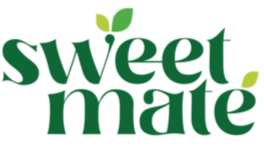The Truth Behind Food Labels
Sweeteners
Refined Sugar
Meaning
Sugar refers to a sweet tasting agent that is commonly found in all foods. It is a type of carbohydrate that helps food to taste better & sweet.
How is it made?
Juice is extracted from sugarcane/beets → purified → boiled → crystallized → refined into white sugar.
What’s the harm caused by it?
Leads to blood sugar spikes, obesity,
dental cavities, and insulin resistance; associated with type-2 diabetes.
Calories without nutritional value.
Where is it used?
Packaged food items, carbonated beverages, confectionery products, tea and coffee consumed daily, baked products, sweets, and desserts
Honey
Meaning:
A naturally occurring sweetener made by bees from the nectar of flowers.
How is it made?
Bees gather nectar → partially break it down → keep it in honeycombs → water content reduced to create thick honey.
What’s the harm caused by it?
While it’s natural, the fructose content is still elevated → overconsumption can lead to weight increase, insulin resistance and dental caries. If heated it can be poisonous to consume.
Where is it used?
Packaged food items, carbonated beverages, confectionery products, tea and coffee consumed daily, baked products, sweets, and desserts.
Maltodextrin (E1400)
Meaning
A carbohydrate that has undergone extensive processing and is derived from starch.
How it is made?
Starch from corn, potato, wheat, or rice is hydrolyzed with enzymes/acid → results in a white powder that has no flavor.
What's the harm caused by it?
High glycemic index → spikes blood sugar. Overuse is linked to gut imbalance, inflammation, and weight gain.
Where it is used?
Energy drinks, processed snacks, infant formula, sauces, protein powders, as a thickener/filler.
Invert Syrup (E1103)
Meaning
A liquid sweetener composed of glucose and fructose, which is sweeter than ordinary sugar.
How is it made?
Sucrose is hydrolyzed (with acid or enzymes) into glucose + fructose → remains liquid.
What's the harm caused by it?
High fructose content → plays a role in fatty liver, diabetes, and obesity.
Where is it used?
In soft drinks, ice creams, candies, jams, and baked goods to retain moisture and prolong shelf life
Aspartame
Meaning
An artificial low-calorie sweetener that is about 200x sweeter than sugar.
How is it made?
Synthesized from two amino acids (aspartic acid + phenylalanine).
What's the harm caused by it?
Safe when consumed in moderation, but high amounts can lead to headaches and mood swings. Not safe for individuals with PKU (Phenylketonuria). Linked to metabolic issues in a controversial manner.
Where is it used?
Diet sodas, sugar-free gums, desserts, protein shakes, zero-calorie products.
Food Colors & Flavors
Synthetic Colors (E100 to E199)
Meaning
Synthetic or artificial colors are dyes and pigments created by humans, used to add or enhance the color of food, drinks, and various consumer products.
How is it made?
Synthesized in laboratories, frequently utilizing raw materials derived from petroleum. Unlike natural colors, which can fluctuate, they are standardized to guarantee consistent color intensity and stability.
What harm is caused by it?
Research has associated specific artificial colors with hyperactivity and behavioral problems in children, commonly known as the “ADHD effect.” Some colors may also provoke allergic reactions, skin rashes, or asthma in those who are sensitive. Even though they have no nutritional benefits, their long-term use has led to worries about possible connections to cancer and other chronic health issues.
Where is it used?
Mostly in all processed foods right from Candies, soft drinks, ice creams, bakery products, cosmetics to pharmaceuticals.
Artificial Flavors
Meaning
Synthetic (or artificial) flavors are chemically produced substances that aim to replicate the taste or scent of natural components. They are laboratory-created to mimic the flavor profile of the actual food source, rather than being derived directly from it.
How is it made?
Chemists pinpoint the essential aroma and flavor molecules found in natural foods (such as vanilla, strawberry, or butter) and then replicate them through chemical synthesis, frequently using petroleum-based or other chemical raw materials.
What harm is caused by it?
Research has associated specific artificial colors with hyperactivity and behavioral problems in children, commonly known as the “ADHD effect.” Some colors may also provoke allergic reactions, skin rashes, or asthma in those who are sensitive. Even though they have no nutritional benefits, their long-term use has led to worries about possible connections to cancer and other chronic health issues.
Where it is used
Mostly in all processed foods right from Candies, soft drinks, ice creams, bakery products, cosmetics to pharmaceuticals.
Additives
Anti Caking Agents (E551)
Meaning
Anti-caking agents are substances incorporated into powdered or granulated foods to avert clumping and enhance free flow. Silicon Dioxide (E551) is a widely used anti-caking agent in the food industry.
How is it made?
Silicon dioxide is found naturally in quartz, sand, and various plants (such as rice husk). For culinary applications, it is usually manufactured through a synthetic process that involves vaporizing silicon compounds and letting them interact with oxygen, which produces a fine powder deemed safe for use.
What harm is caused by it?
Lead to stomach irritation, mineral imbalance, and issues related to long-term accumulation. The main disadvantage is that it is an additive with purely functional properties.
Where is it used?
Salt, Drink mix, spice mixes, Coffee whiteners & milk powders


